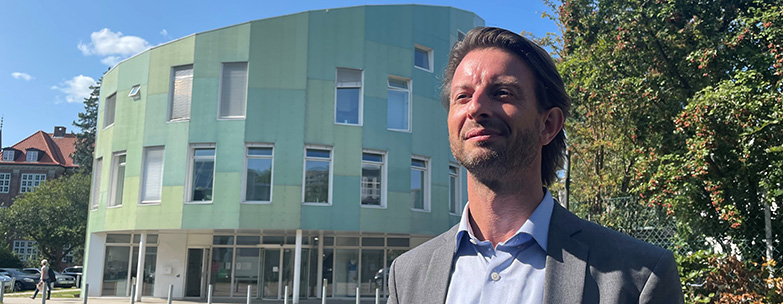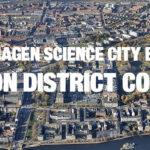First innovation officer wants to win university hearts for entrepreneurship
University of Copenhagen is creating an innovation centre to unite entrepreneurship initiatives from all its six faculties. The centre will be located in the iconic “Green Lighthouse” building which is located in the heart of Copenhagen Science City – one of Europe’s leading innovation districts. The university recently appointed Marius Sylvestersen as its first Chief Innovation Officer. He hopes to see innovation and entrepreneurship take an equally central place in the hearts of students and staff.
The secret start-up launchpad
Students and staff at The University of Copenhagen launch on average 290 new companies every year, so it is already a major national business incubator. Strangely, companies, media and politicians do not see the university as a start-up launchpad. Sylvestersen hopes to change that.
I believe that the innovation centre will make it easier for companies and other innovation partners to reach out to the university. Not only will that help the university create more value for society. It will also make the university known for innovation and entrepreneurship”: Marius Sylvestersen, Chief Innovation Officer, University of Copenhagen.
A physical one-stop-shop for entrepreneurial dreamers
The post as Chief Innovation Officer is a new one for the University and Sylvestersens first task will be to create the physical setting for the innovation centre. The neighbouring University Library has pledged 299 square metres. Along with 908 square metres in Green Lighthouse the centre will provide ample and modern office- and education space. However, Sylvestersen is very aware, that the university already has well-functioning local student-start-up communities.
I am not here to compete against what already works. I do hope to locate the best local ideas and get them adopted across the organisation, but first and foremost the centre should make it easier for students and staff to work across disciplines and curricula. To find co-founders with other capabilities. To take advantage of the wealth of knowledge at the university”: Marius Sylvestersen, Chief Innovation Officer, University of Copenhagen.
Co-creation across internal and external borders
Much of modern innovation takes place in the space between unrelated fields. The University of Copenhagen represents deep knowledge in a wide range of subjects but the location of the new centre could also inspire co-creation with other institutions. Copenhagen Science City is home to the university hospital Rigshospitalet and University College Copenhagen as well as six start-up communities housing well over 450 deep-tech start-ups.
At the Secretariat of Copenhagen Science City we will help connect local partners with the new innovation center. I am certain, that the centre will become a valuable part of the innovation eco-system in our innovation district”: Kristoffer Klebak, Head of Secretariat, Copenhagen Science City.
Exciting, complex and fun
The many potential collaborators and co-creators is what makes the job exciting to Sylvestersen. Finding a way to make the new centre fit into the existing innovation eco-system is what makes it complex. Attracting non-entrepreneurs might be what will make it fun.
The first people through the door will probably be those who are already building businesses or teaching entrepreneurship. However, a really important task will be to persuade people who have not been converted to entrepreneurship, that they too are welcome in the centre”: Marius Sylvestersen, Chief Innovation Officer, University of Copenhagen.




